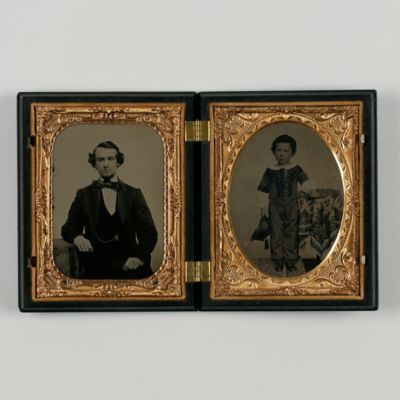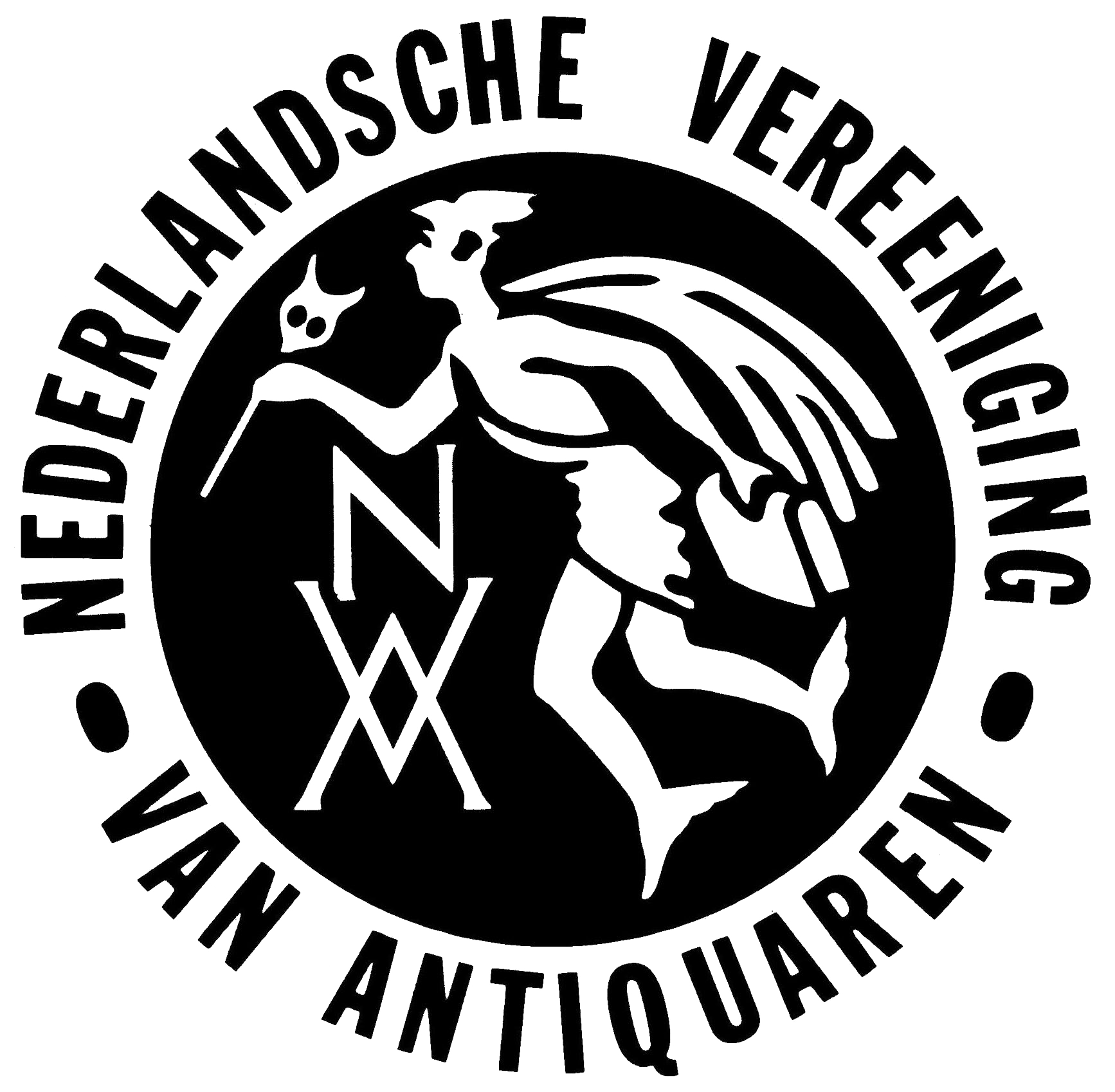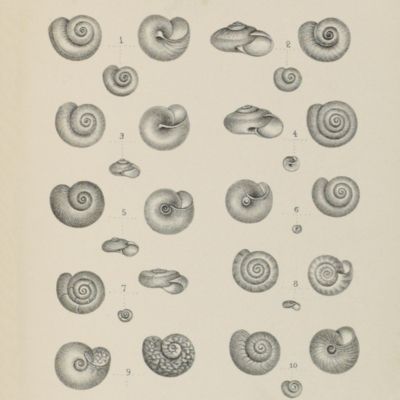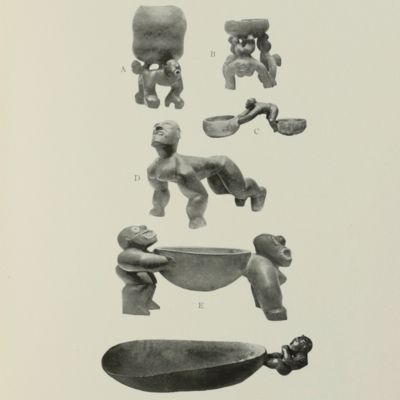[Photobox]
"Father and son". Two portraits in pressed gutta-percha box.
Locality unknown, ca. 1850-1860. A richly decorated box with two fine, glazed prints in, respectively, a rectangular frame with rounded corners, and an oval frame (both ca. 8.2 x 6.5 cm), each surrounded with an elaborate gilt border. The first is an ambrotype, the second a tintype photo. The exterior with raised, rococo borders and oval cartouche. Edges hollowed.
19th-century photo boxes are common, but rather few are as opulent as this one, made of gutta-percha. "Gutta-percha is a tree of the genus Palaquium in the family Sapotaceae, which is primarily used to create a high-quality latex of the same name. The material is rigid, naturally biologically inert, resilient, electrically nonconductive, and thermoplastic, most commonly sourced from Palaquium gutta; it is a polymer of isoprene which forms a rubber-like elastomer. The word 'gutta-percha' comes from the plant's name in Malay: getahtranslates as 'sticky gum' and pertja (perca) is the name of a less-sought-after gutta tree. The western term therefore is likely a derivative amalgamation of the original native names. Long before gutta-percha was introduced into the Western world, it was used in a less-processed form by the natives of the Malaysian archipelago for making knife handles, walking sticks, and other purposes. The first European to study this material was John Tradescant, who collected it in the Far East in 1656. Scientifically classified in 1843, it was found to be a useful natural thermoplastic. Gutta-percha was particularly important for the manufacture of underwater telegraph cables. Compared to rubber, it does not degrade in seawater, is not damaged by marine life, and maintains good electrical insulation. These properties, along with its mouldability and flexibility made it ideal for the purpose, with no other material to match it in the 19th century. Michael Faraday discovered its value as an insulator soon after the introduction of the material to Britain in 1843. Gutta-percha was used to make 'mourning' jewelry, because it was dark in color and could be easily molded into beads or other shapes" (Wikipedia). The last-mentioned quality may be the reason that gutta-percha was used for this particular box - the photographs perhaps being of two deceased persons. The photo (tin type) of the boy has a delicate touch of rouge added to his cheeks. The "father" photo is an ambrotype (known as a collodion positive in the UK), a positive photograph on glass made by a variant of the wet-plate collodion process. A fine, flawless, moving, item.






